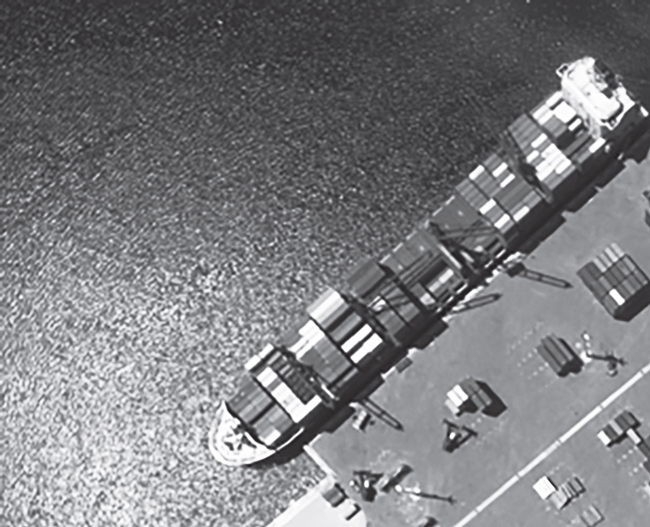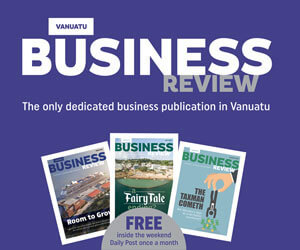VANUATU SHIPPING CRISIS PRICES SOAR
September 25, 2021 9:00 pm | Posted in Features | Share now TwitterFacebook

By Chris Kernot
Vanuatu is an island nation which is heavily reliant on inbound shipping. Fuel, construction materials, motor
vehicles, processed food, are many items that are imported to Vanuatu and this places importance on logistics.
Logistics, good logistics, is about having great information available whether it be schedules or tariffs, people to talk to
in critical places around the world, and those relentless, never ending stream of emails to keep things moving.
Covid 19 has changed all that for a great many reasons. All the information has changed and nothing is as certain as it was. Why?
Sea freight
Shipping lines work out a shipping schedule all around the world to be the most efficient that a vessel can
do a certain run upon, and in the South Pacific our closest neighbours Australia and NZ have through the years maintained a shipping schedule almost reliable enough to set your watch by. Into these schedules are built
allowances for the Public holidays in each country, whether those countries work on public holidays or not, expected
time in each port to work the vessel’s exchange in discharging full containers and breakbulk and the backloading of
mostly empty containers, and transit times from Port to Port.
Having worked out the schedules, and knowing the charter costs for the vessel is the platform for setting the shipping
rates. That is, number of days times the charter rates per day, plus the fuel, plus the port costs in each country,
and throw in some currency fluctuation calculations. This becomes the basis for establishing freight rates.

Covid 19 has meant that outside of shipping lines control, each country has strict measures to establish whether there is a risk attached to the vessel, this causes delays. And delays equals an extension of the schedule so instead of doing 12 trips per year for example, the vessels are only doing 10.5 trips per year. Further, the delays in ports which previously had an easy throughput of vessels has created waiting times in the larger ports which is referred to as congestion, sometimes delaying vessels for many days, even into weeks.
What does this mean? The vessels are chartered to meet a certain anticipated demand for space and so if a vessel is chartered to cope with 12 months’ worth of cargo on 12 voyages but now has to accomplish the same amount of cargo to be shipped, but only in 10.5 voyages instead of 12 voyages the costs per voyage increase. Global index’s that track freight rates show the World Container Index per 40 foot container 351% up vs the same period in 2020. By comparison the increases by the lines servicing the Pacific are less than 10% when compared to the global trend. All lines are very conscious of shipping affordability. Their increases are measured and about long term sustainability and should be evaluated in terms of the market developments. Container handling and bunker (Fuel) costs are rising significantly and the global charter market for vessels suitable for pacific trades has increased 305% compared with 2020 (not all shipping lines own their own vessels, they charter). In addition to soaring costs of idle ship time Port congestion has reduced overall capacity by more than 30%. Maintaining Covid safe crewing and carrying out ship maintenance in covid times comes at a high cost.
This creates several difficulties, the first is that the trade lane is likely to be under-tonnaged meaning that the ships are having to try to cope with more cargo on each, there is not enough space and at particular high space demand requirements such as pre-Christmas, overbooking will mean that a lot of cargo cannot be carried. Cargo will be left behind and possibly not reach the destination in the preferred time-scale.

The second difficulty is needing to adjust the tariffs because of the increased costs, and not just one tariff, but all tariffs. And not just for shipping cost changes because of extending the voyage time, but also for other new costs such as the above mentioned port congestion.
The extended voyage time, creating under-tonnaging creates another problem. Shipping lines no longer have the space sufficient to meet demand, so of course they are looking to take on additional tonnage to carry the “extra” cargo. This created a demand for vessel charters which has never been equalled in recent times. This high demand has pushed charter rates through the roof and now it is very difficult to charter a vessel at all – at any price. They are simply not available.
As a result this, sea freight rates on 20ft containers have increased by 40-60% and are expected to increased further. These increases will flow on to increased costs of cement, fuel, construction materials, and rice.
Airfreight
Airfreight rates have also increased dramatically. In the past Airfreight used to be regarded as a bonus for the airlines using belly space on planes which were full of passengers whose luggage did not take up all the space available. Air cargo subsidised the flight to some degree, however usually the flight would be mostly paid for by the passengers with air fares calculated in a similar way to the shipping costs as above, hourly charter rate, fuel consumed per hour, destination and local costs etc.
However now with the recent changes in passenger numbers, for incoming passengers for Vanuatu, the revenue for the cargo on its own needs to cover the costs of what was previously covered by the cargo AND passengers. So naturally the prices of airfreight have gone through the roof and that is unlikely to change until passengers and tourism is once more back in full.
Vanuatu has have been fortunate to have the Fiji connection to use and DHL Express along with other freight companies which has enabled them to hub all cargo from around the world into Nadi where it is put onto the first flight from Nadi to Bauerfield airport. This has meant that the urgent supplies that are needed like, machinery, parts, medicines etc have a reasonable transit time even though there are so many fewer flights than previously.










